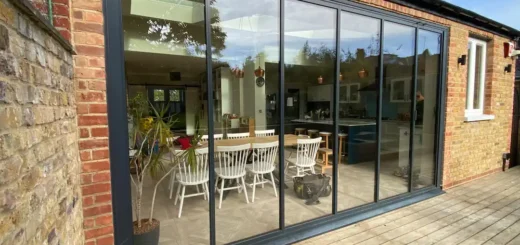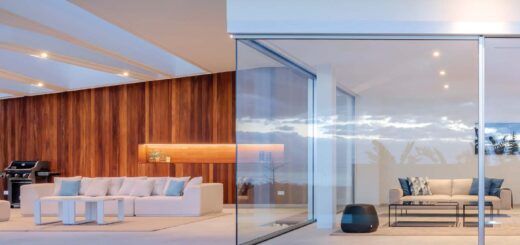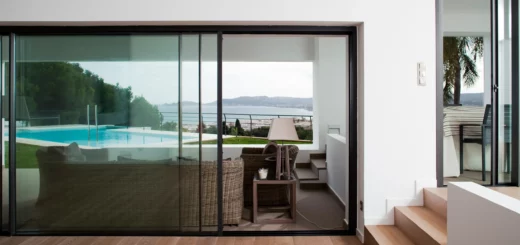French Doors vs Sliding Doors – A Comparison
Table of Contents
What Are French Doors and Sliding Doors?
Glass doors connecting indoor spaces to gardens or patios come in various styles. French doors and sliding doors stand out as popular choices for British homeowners, and offer distinct features that can change how you use and enjoy your living space.
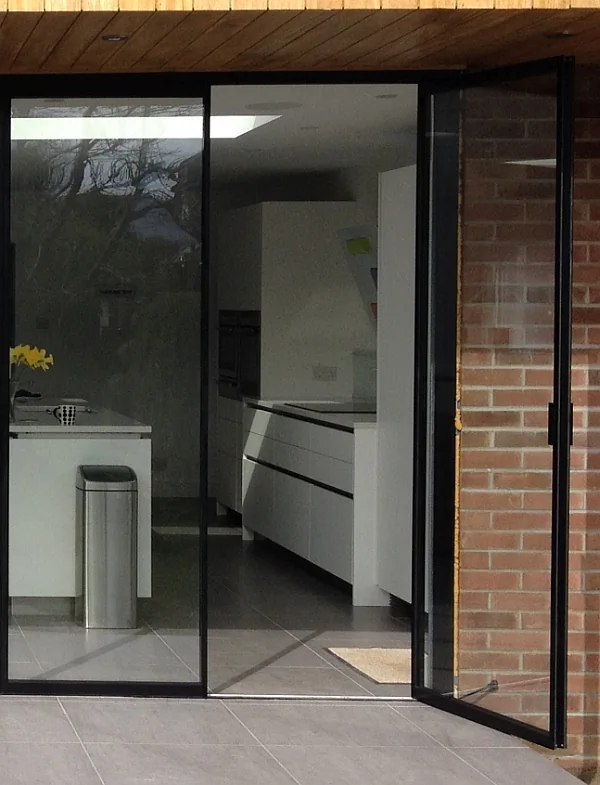
French Door Basics
Hinged at the sides, French doors swing open like traditional doors and typically come in pairs, creating a wide opening when both are ajar. The design often includes multiple glass panes separated by wooden or metal strips called muntins. This classic look suits period properties and modern homes alike.
French doors originated in 17th-century France, where they were used as large windows reaching to the floor. Over time, they evolved into functional doorways.
Today’s versions maintain the traditional charm while incorporating modern materials and energy-efficient glazing.
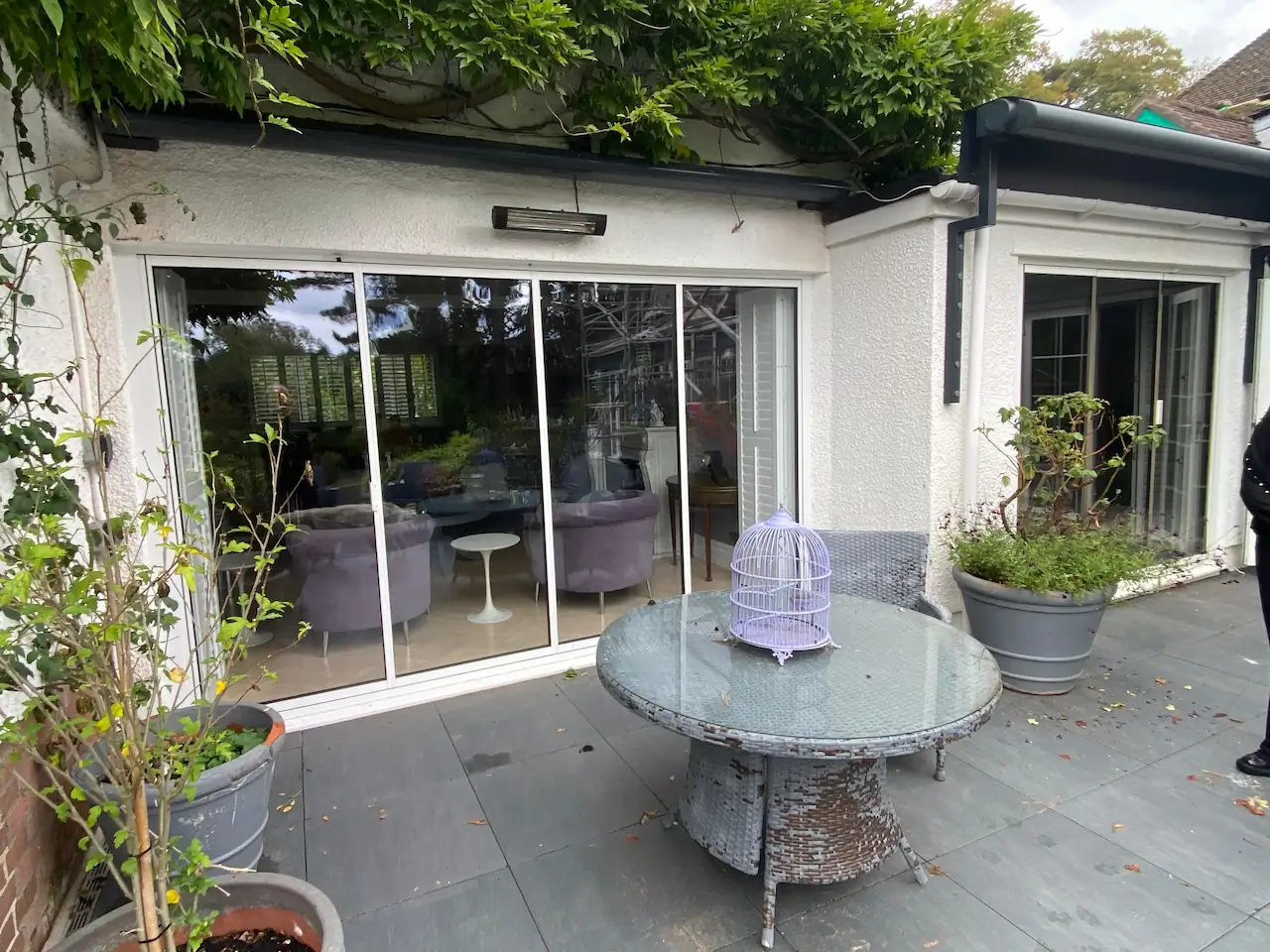
What Are Sliding Doors?
In contrast, sliding doors (also known as patio doors) consist of large glass panels that glide along tracks. One panel usually moves, while the other remains fixed. This design allows for a broad, unobstructed view of the outdoors. Sliding doors gained popularity in the mid-20th century as part of the modernist architectural movement.
Modern sliding doors often feature slim frames, and are particularly well-suited to contemporary homes and spaces where a sleek, minimal look is desired. The smooth operation of sliding doors makes them a practical choice for frequent use.
French Doors vs Sliding Doors at a Glance
Several factors come into play when comparing sliding doors vs French doors. French doors offer a traditional aesthetic and can open fully to merge indoor and outdoor areas. Sliding doors, however, excel in situations where space is at a premium, as they don’t require clearance to swing open.
French doors operate much like standard doors, swinging on hinges. This familiar mechanism makes them intuitive to use but requires space for the door arc. Sliding doors, on the other hand, move parallel to the wall. Their linear motion saves space but may feel less natural to some users.
The choice between sliding patio doors vs French doors often boils down to personal preference and the specific requirements of your space. Both types can provide ample natural light and easy access to outdoor areas, but their distinct characteristics suit different architectural styles and practical needs.
French Doors vs Sliding Doors: Opening Mechanisms
The way doors open can shape how you use your living space. French doors and sliding doors operate differently, each with its own impact on room layout and accessibility.
French Door Operation
French doors swing open on hinges, much like traditional interior doors. They typically come in pairs, with each door attached to opposite sides of the frame. When both doors are open, they create a wide entryway that allows for easy movement between spaces.
The swinging motion of French doors requires clearance both inside and outside. This means you’ll need to plan your furniture arrangement carefully to avoid obstructing the doors’ path. However, the ability to open French doors fully can create a broad passageway, ideal for entertaining or moving large items.
Sliding Door Movement
Sliding doors, as their name suggests, glide along a track. Usually, one or more panels move horizontally past a fixed panel. This linear motion means sliding doors don’t need any clearance to open, making them excellent space-savers.
The tracks that sliding doors run on are typically installed at the top and bottom of the door frame. High-quality tracks ensure smooth operation, allowing you to open and close the door with minimal effort. Some modern sliding systems even feature soft-close mechanisms, adding a touch of luxury to their operation.
Room Layout Impact
When weighing up sliding doors vs French doors, floor space is likely an important factor. French doors need room to swing, which can limit furniture placement near the doorway. However, sliding doors don’t encroach on your living area when open, allowing you to use the space right up to the door frame.
French doors can divide a room when closed, creating distinct spaces. When open, they offer a grand entrance that can make a statement in your home. Sliding doors, with their large panes of glass, maintain visual continuity even when closed, helping smaller rooms feel more spacious.
Types of Doors and Their Uses
The choice between French doors or sliding doors often depends on how you plan to use the space. French doors work well in formal dining rooms or studies, where their traditional look complements the decor. They’re also great for patios, allowing you to throw both doors wide open on a sunny day.
Sliding doors shine in areas where space is tight or where you want to frame a view. They’re popular for balconies in flats or for connecting kitchens to garden areas. The large glass panels of sliding doors let in plenty of light, even when closed, brightening up your living space year-round.
French Doors vs Sliding Doors: Light and Views
French Door Light Design
French doors typically feature multiple panes of glass separated by muntins. This classic design adds character to a room, creating interesting shadows and light patterns throughout the day. The divided light style can complement traditional architecture, adding a touch of elegance to your space.
However, the muntins in French doors can slightly obstruct the view. While this might not be noticeable when the doors are open, it can affect your line of sight when they’re closed. On the plus side, the ability to open French doors wide allows for unimpeded views and excellent air circulation on pleasant days.
Sliding Door Glass Area
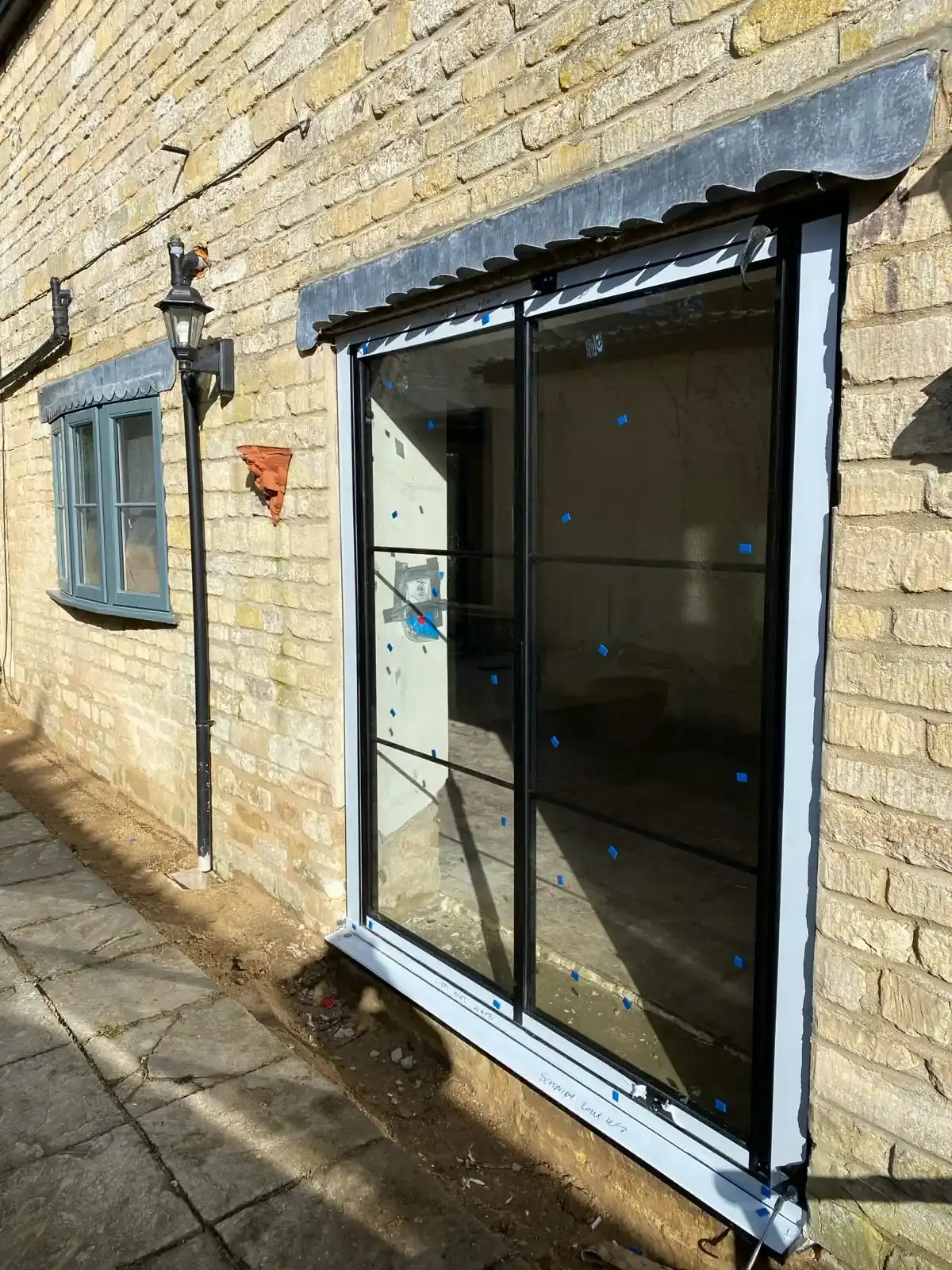
Sliding doors often boast large, uninterrupted panes of glass. This design allows for expansive views of the outdoors, making them a popular choice for homes with scenic surroundings. The lack of muntins means that sliding doors can let in more light, potentially making your room feel brighter and more spacious.
Living room internal sliding glass doors have gained popularity in recent years. They can divide spaces while maintaining an open feel, allowing light to flow between rooms. This can be particularly useful in smaller homes where natural light is at a premium.
Seasonal Light Performance
When comparing sliding doors vs French doors, think about how they perform across seasons. In summer, both types allow you to open up your home to the garden. French doors can be flung wide open, creating a grand entrance to your outdoor space. Sliding doors, while they can’t open as fully, still provide a generous opening.
During winter, the large glass area of sliding doors can let in valuable sunlight, helping to warm your home naturally. French doors, with their divided panes, might not let in quite as much light, but they can still brighten up a room a lot.
Internal Use
Internal sliding doors with glass are becoming increasingly common in modern homes. They offer flexibility, allowing you to divide spaces when needed while maintaining a sense of openness. French doors can also be used internally, although this is somewhat less common.
Both French doors and sliding doors can work well as room dividers. French doors allow you to completely separate spaces when closed, which can be useful for creating quiet zones or managing heating. Sliding doors, even when closed, maintain a visual connection between spaces thanks to their large glass panels.
The choice between French doors vs sliding doors ultimately depends on your specific needs and the style of your home. Both can bring light and views into your living space, each with its own unique charm.
French Doors vs Sliding Doors: Security and Energy
When choosing patio doors, security and energy efficiency often overlooked but should be top of mind. Both French and sliding doors offer various features to keep your home safe and warm, but their designs lead to different approaches.
Door Locking Systems
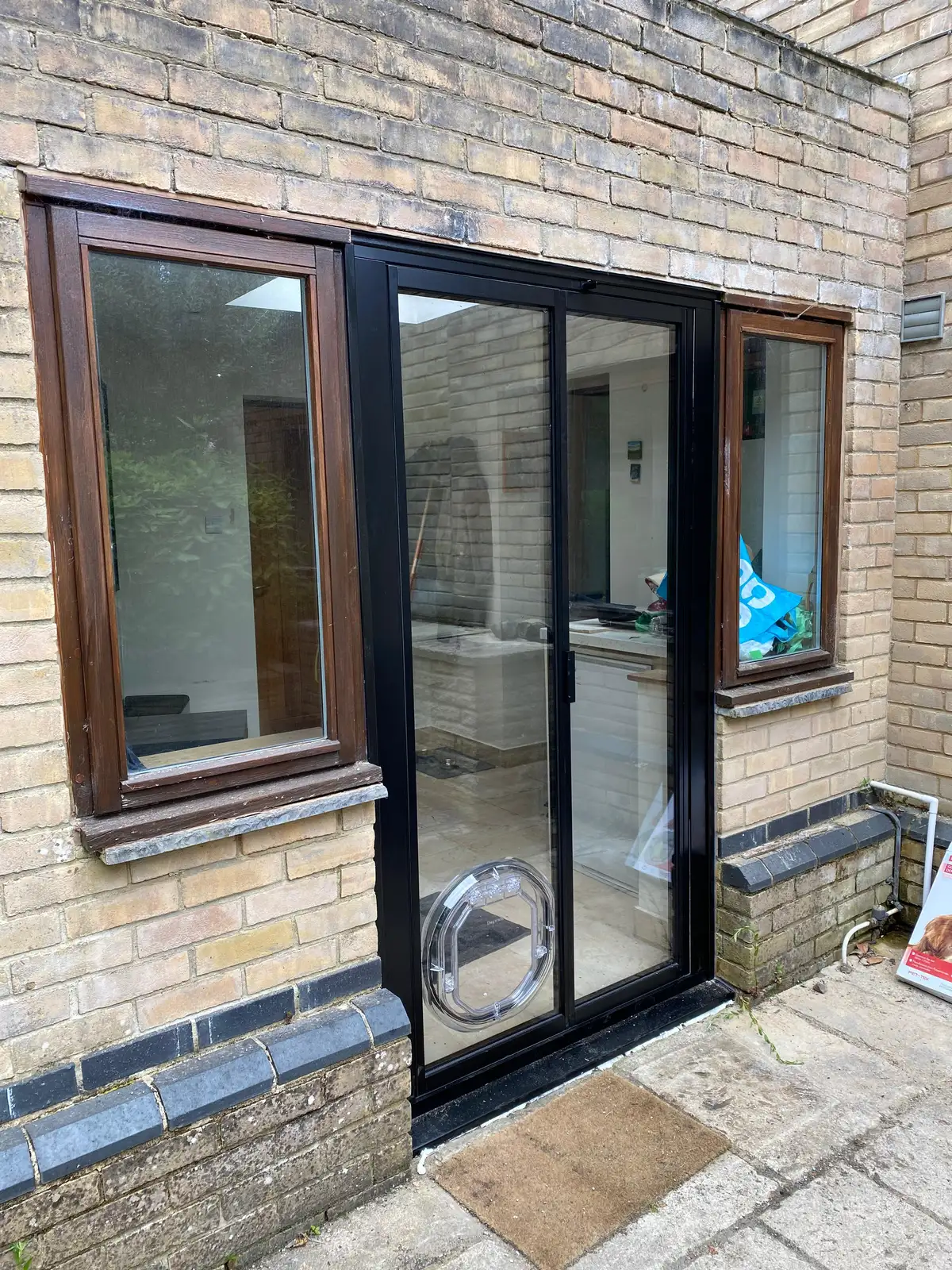
French doors typically use multi-point locking systems. These secure the door at several points along the frame when locked, providing robust protection. Some designs include shoot bolts at the top and bottom, further strengthening the door against forced entry.
Sliding doors often rely on hook locks that engage with the frame. While traditionally seen as less secure than French door locks, modern sliding patio doors now feature advanced locking mechanisms. These can include multi-point systems similar to those found on French doors, levelling the playing field in terms of security.
Weather Protection
Energy efficiency is another important aspect when comparing sliding doors vs French doors. Both types can be fitted with double glazing, which helps to insulate your home. The effectiveness of this insulation can vary depending on the quality of the installation and the materials used.
French doors, with their separate panels, can sometimes suffer from drafts where the doors meet in the middle. However, high-quality French patio doors come with effective seals to mitigate this issue. Sliding doors, with their overlapping panels, often provide a good seal against the elements.
Sound Insulation
Noise reduction is an often-overlooked aspect of patio doors. French doors, due to their thicker frames and multiple sealing points, can offer good sound insulation when closed. Sliding doors, with their large glass panels, might seem less effective at blocking noise. However, modern sliding or French doors can be equipped with specialised acoustic glass to improve sound insulation.
Interior Applications
While we often think of French doors and sliding doors as exterior features, they’re increasingly popular as interior options too. Interior sliding doors can create flexible living spaces, allowing you to open up or close off areas as needed. They’re particularly useful in smaller homes where space is at a premium.
French doors used internally can add a touch of elegance to your home, creating a grand entrance between rooms. They allow you to maintain privacy when closed while still letting light flow through the glass panels.
Whether you choose French doors or sliding doors, you’ll get security, energy efficiency, and style, but their different designs mean they excel in different areas. Your choice will depend on your specific needs, the layout of your home, and your personal preferences.
French Doors vs Sliding Doors: Maintenance
Keeping your patio doors in top condition ensures they’ll serve you well for years to come. Both French and sliding doors require regular care, but their different designs mean they have unique maintenance needs.
French Door Maintenance
French doors, with their hinged design, need attention paid to their moving parts. The hinges should be oiled periodically to keep them swinging smoothly and prevent squeaking. If your French patio doors are made of wood, they may need repainting or revarnishing every few years to protect them from the elements.
Weather stripping around French doors plays a vital role in keeping out drafts and moisture. Check these seals regularly and replace them if they show signs of wear. This simple task can help maintain your door’s energy efficiency and prevent water damage.
Sliding Door Upkeep
Sliding patio doors rely on their tracks for smooth operation. These tracks can accumulate dirt and debris over time, which can impede the door’s movement. Regular cleaning of the tracks with a vacuum and a damp cloth can prevent this issue. For aluminium sliding patio doors, a silicone spray applied to the tracks can help the doors glide more easily.
The rollers that allow sliding doors to move are another area that needs attention. If your door becomes difficult to slide, the rollers may need adjusting or replacing. This job is often best left to professionals, as it involves partially dismantling the door.
Long-Term Door Performance
When comparing sliding doors vs French doors, long-term performance is an important factor. French doors, with their traditional design, can last for decades if well-maintained. Their individual components, such as handles, locks, and glass panes, can usually be replaced if needed without changing the entire door.
Sliding doors, particularly modern designs, often have a sleek, minimalist look that can stand the test of time. However, their performance relies heavily on the condition of their sliding mechanism. Regular maintenance of this system is key to ensuring your sliding patio doors continue to operate smoothly.
Glazing Maintenance
Both types of patio doors feature large glass areas that need regular cleaning. For both French and sliding doors, use a mild detergent and a soft cloth to clean the glass, avoiding abrasive materials that could scratch the surface. If your doors have double glazing, keep an eye out for any signs of seal failure, such as condensation between the panes.
The choice between sliding patio doors vs French doors can impact your maintenance routine. French doors might require more frequent attention to their numerous moving parts, while sliding doors need consistent care of their tracks and rollers. Both types, however, can provide years of trouble-free service with proper upkeep.
French Doors vs Sliding Doors: Frequently Asked Questions
What’s the difference between French doors and sliding doors?
French doors consist of two hinged panels that open outwards or inwards, whilst sliding doors glide along a track. French doors offer a wide opening when both panels are ajar, creating a grand entrance. Sliding doors are space-efficient and provide a large glass area for unobstructed views.
Are French doors more expensive than sliding doors?
The cost difference between French and sliding doors can vary based on materials and specifications. Generally, basic sliding doors tend to be less expensive than French doors due to their simpler mechanism. However, high-end sliding doors with advanced features can be pricier than standard French doors.
Which is better for energy efficiency: French doors or sliding doors?
Both door types can be energy-efficient when properly installed and sealed. The energy efficiency often depends on factors like glazing type and frame material rather than the door style itself. When comparing doors, look for their U-value – a lower U-value indicates better insulation properties.
Can sliding doors be used as interior doors?
Yes, modern internal sliding doors are increasingly popular for interior use. They’re excellent space-savers, making them ideal for smaller homes or rooms where swing space is limited. Internal sliding doors can separate living areas whilst maintaining an open-plan feel when desired.
How do I choose between sliding vs French doors for my patio?
Think about your available space, desired aesthetic, and how you’ll use the doors. French doors suit traditional homes and offer a wide opening, whilst sliding doors are great for uninterrupted views and tight spaces. Think about factors like energy efficiency, security features, and maintenance requirements too.
Are French or sliding doors better for small spaces?
Sliding doors are typically better for small spaces as they don’t require swing room. They slide parallel to the wall, saving valuable floor space. French doors need clearance to open fully, which can limit furniture placement in compact rooms.
What’s the difference between sliding doors and bi-fold doors?
Sliding doors and bi-fold doors (also known as concertina doors) differ in their opening mechanism and appearance. Sliding doors move along a track, with panels overlapping when open. Bifold doors consist of multiple panels that fold and stack to one or both sides when opened. Bifolds can create a wider opening but require more wall space when folded back. For more details, please see our sliding doors vs bifold doors comparison.
What’s the difference between French doors and double doors?
French doors and double doors are similar, but French doors typically feature glass panes throughout, whilst double doors may be solid or partially glazed. French doors often have a more ornate, traditional look, whereas double doors can vary widely in style. Both types usually open in the middle and swing outwards or inwards.
What’s best for garden views? French doors or sliding doors?
Sliding doors often provide better garden views due to their large, uninterrupted glass panels. They offer a wider expanse of glass when closed, creating a picture-frame effect for your garden. French doors, whilst still offering good views, have more frame visible which can slightly obstruct the outlook.
Are French doors or sliding doors easier to open?
Sliding doors are generally easier to open, especially for children or those with limited mobility. They require a simple sliding motion, whereas French doors need more force to push or pull open. However, well-maintained French doors with quality hardware can also operate smoothly.
What colour sliding doors work best with a modern interior?
White sliding internal doors are a popular choice for modern interiors, offering a clean, versatile look that complements various colour schemes. However, the best colour depends on your specific decor. Neutral tones like grey or black can create a striking contrast, whilst wood finishes add warmth to a contemporary space.
About SunSeeker Doors
With over 20 years of experience, SunSeeker Doors remains at the forefront of door design with our quality-tested patio doors and related products, including the bespoke UltraSlim aluminium slide and pivot door system, Frameless Glass Doors, and Slimline Sliding Glass Doors. All of our doors are suitable for both internal and external use.
To request a free quotation, please use our online form. You may also contact 01582 492730, or email info@sunseekerdoors.co.uk if you have any questions.


